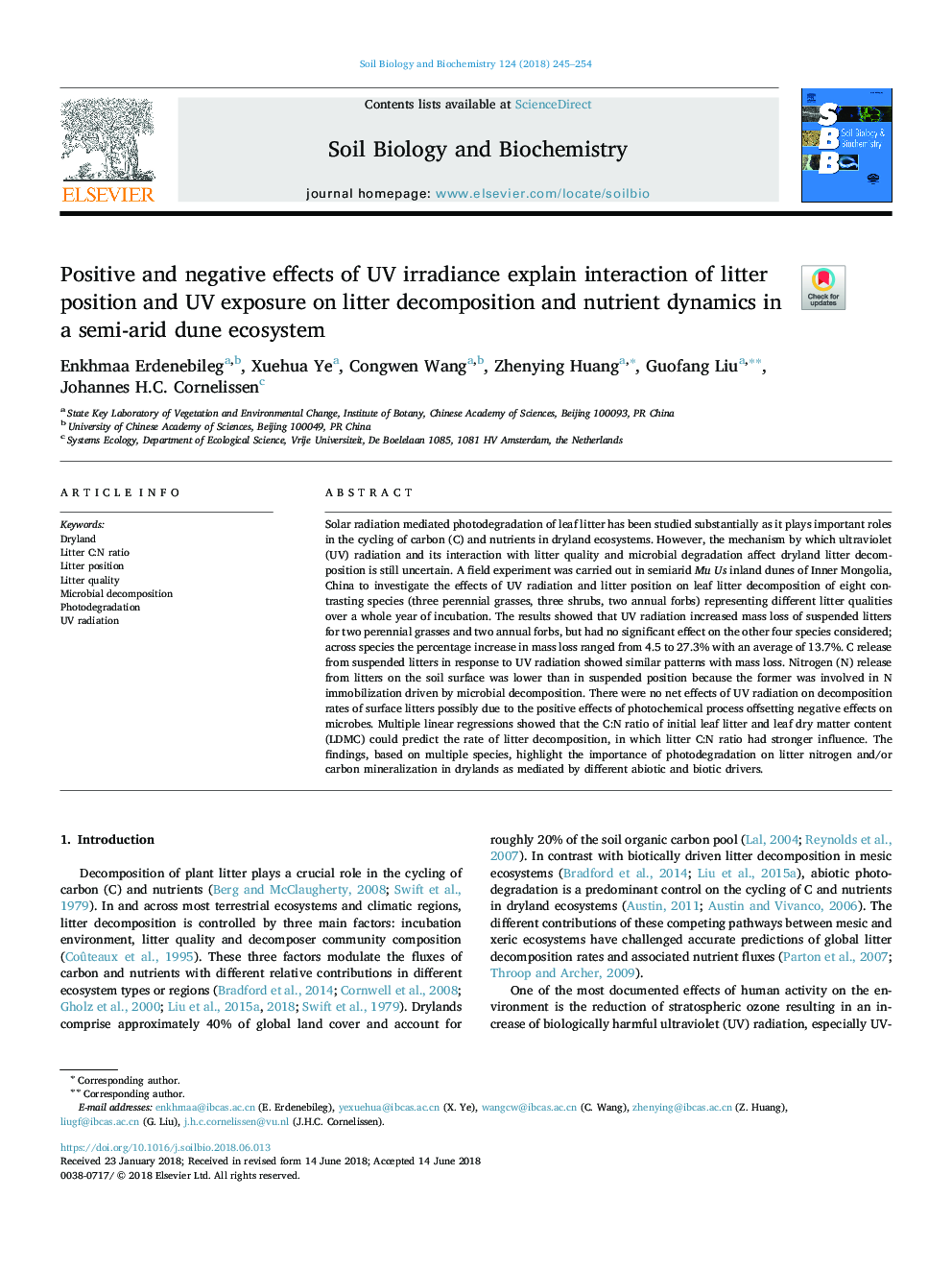| کد مقاله | کد نشریه | سال انتشار | مقاله انگلیسی | نسخه تمام متن |
|---|---|---|---|---|
| 8362611 | 1542560 | 2018 | 10 صفحه PDF | دانلود رایگان |
عنوان انگلیسی مقاله ISI
Positive and negative effects of UV irradiance explain interaction of litter position and UV exposure on litter decomposition and nutrient dynamics in a semi-arid dune ecosystem
ترجمه فارسی عنوان
اثرات مثبت و منفی اشعه ماوراء بنفش تعامل موقعیت بستر و اشعه ماوراء بنفش را در تجزیه بستر و مواد مغذی در یک اکوسیستم نیمه خشک
دانلود مقاله + سفارش ترجمه
دانلود مقاله ISI انگلیسی
رایگان برای ایرانیان
کلمات کلیدی
موضوعات مرتبط
علوم زیستی و بیوفناوری
علوم کشاورزی و بیولوژیک
دانش خاک شناسی
چکیده انگلیسی
Solar radiation mediated photodegradation of leaf litter has been studied substantially as it plays important roles in the cycling of carbon (C) and nutrients in dryland ecosystems. However, the mechanism by which ultraviolet (UV) radiation and its interaction with litter quality and microbial degradation affect dryland litter decomposition is still uncertain. A field experiment was carried out in semiarid Mu Us inland dunes of Inner Mongolia, China to investigate the effects of UV radiation and litter position on leaf litter decomposition of eight contrasting species (three perennial grasses, three shrubs, two annual forbs) representing different litter qualities over a whole year of incubation. The results showed that UV radiation increased mass loss of suspended litters for two perennial grasses and two annual forbs, but had no significant effect on the other four species considered; across species the percentage increase in mass loss ranged from 4.5 to 27.3% with an average of 13.7%. C release from suspended litters in response to UV radiation showed similar patterns with mass loss. Nitrogen (N) release from litters on the soil surface was lower than in suspended position because the former was involved in N immobilization driven by microbial decomposition. There were no net effects of UV radiation on decomposition rates of surface litters possibly due to the positive effects of photochemical process offsetting negative effects on microbes. Multiple linear regressions showed that the C:N ratio of initial leaf litter and leaf dry matter content (LDMC) could predict the rate of litter decomposition, in which litter C:N ratio had stronger influence. The findings, based on multiple species, highlight the importance of photodegradation on litter nitrogen and/or carbon mineralization in drylands as mediated by different abiotic and biotic drivers.
ناشر
Database: Elsevier - ScienceDirect (ساینس دایرکت)
Journal: Soil Biology and Biochemistry - Volume 124, September 2018, Pages 245-254
Journal: Soil Biology and Biochemistry - Volume 124, September 2018, Pages 245-254
نویسندگان
Enkhmaa Erdenebileg, Xuehua Ye, Congwen Wang, Zhenying Huang, Guofang Liu, Johannes H.C. Cornelissen,
